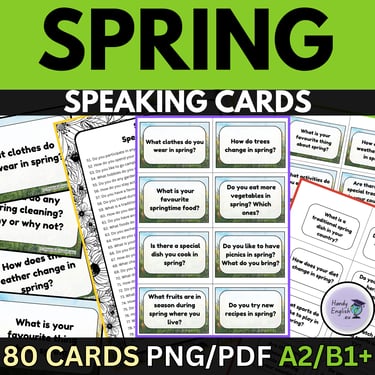[BLOG] Teaching Abroad: A Teacher’s Survival Guide #5: Building Relationships with Students from Different Cultures
Discover how to build meaningful connections with students from diverse cultural backgrounds. This blog explores practical tips, challenges, and the importance of cultural awareness in fostering inclusive and effective teaching. Perfect for educators aiming to create a supportive and understanding learning environment.
Kaya
1/5/2025
Please keep in mind that the opinions posted on this blog are my own.
Everybody might have a different experience and opinions, and that's OK.
Teaching students from different cultural backgrounds is as rewarding as it is challenging. While the diversity in the classroom enriches the learning environment, it also calls for a teacher who is open-minded, adaptable, and ready to bridge cultural gaps. Building meaningful relationships with students from different cultures isn’t about mastering every culture’s nuances but about fostering trust and creating an inclusive space where everyone feels valued. Let’s break it down step by step.
Start with Self-Awareness
Before diving into understanding others, take a moment to reflect on your own cultural identity. What values and assumptions do you bring to the classroom? Being aware of your biases (we all have them!) helps you approach students with an open mind. For instance, if you’re used to a direct communication style, you might initially misinterpret students who communicate indirectly as disengaged or unmotivated. Recognising these tendencies is the first step toward creating genuine connections.
Learn About Your Students’ Cultures
You don’t have to become an expert on every culture represented in your classroom, but a little effort goes a long way. Ask students about their traditions, holidays, and daily lives. Showing interest in their background not only helps you understand their perspectives but also shows them you care. For example, knowing that certain cultures place high importance on collective success can help you adapt your teaching strategies to include more group activities.
If possible, incorporate cultural elements into your lessons. Teaching a lesson on food? Invite students to share dishes or customs from their home countries. Celebrating cultural diversity can transform your classroom into a space where students feel seen and respected.
Adapt Your Communication Style
Language barriers and cultural differences in communication can lead to misunderstandings. Some cultures value a more formal approach when addressing teachers, while others might prioritise casual interactions. Be flexible in your communication style and pay attention to how students respond.
Non-verbal cues are equally important. Gestures, facial expressions, and body language can mean different things across cultures. For instance, maintaining eye contact might signify confidence in some cultures but can be seen as disrespectful in others. Stay observant and willing to adjust your approach as you learn more about your students.
Build a Safe Learning Environment
A classroom where students feel safe to express themselves is essential for building relationships. Start by establishing clear expectations for respect and inclusivity. This could mean setting ground rules for how students should interact with each other and discouraging any form of discrimination or stereotyping.
It’s also important to acknowledge and celebrate mistakes—both yours and your students’. Learning involves trial and error, and students from different cultures might feel especially nervous about making mistakes in a new environment. By normalising errors as part of the learning process, you create a space where students feel confident to participate and take risks.
Be Patient and Empathetic
Cultural differences can sometimes lead to frustration, especially when misunderstandings occur. Patience and empathy are your best tools for navigating these moments. Try to put yourself in your students’ shoes—imagine being in a new country, trying to learn a new language, and adapt to unfamiliar norms.
When challenges arise, take a step back and ask yourself, “What might be causing this behaviour?” For instance, if a student seems withdrawn, they might be feeling homesick or overwhelmed. A small gesture, like asking how they’re doing or offering extra support, can make a big difference.
Foster Peer Connections
Encouraging students to connect with each other helps build a sense of community in the classroom. Use activities that require collaboration, such as group projects or discussions. Mixed-culture groups can be particularly effective for breaking down barriers and promoting understanding.
At the same time, recognise that students might naturally gravitate toward peers from similar backgrounds. That’s okay! Let them find comfort in those connections while gently encouraging broader interactions over time. This balance allows students to feel supported while also expanding their horizons.
Building relationships with students from different cultures requires effort, empathy, and a willingness to learn. It’s not about getting it right all the time but about showing your students that you care about their unique experiences and perspectives. When students feel understood and valued, they’re more likely to engage, participate, and thrive. So, take the time to connect, and watch your classroom transform into a vibrant, inclusive community.






Embrace a Growth Mindset
Building relationships with students from different cultures is a learning process for both you and them. Mistakes are inevitable, but they’re also opportunities for growth. If you accidentally offend a student or misinterpret something, apologise and use it as a chance to learn.
Similarly, encourage your students to adopt a growth mindset. Remind them that adapting to a new culture and language takes time and effort, and that progress is more important than perfection. Sharing your own experiences with learning or adapting can be a great way to build rapport and inspire resilience.
Celebrate Milestones Together
A simple but powerful way to build relationships is by celebrating achievements—big or small. Did a student finally nail a tricky grammar rule? Celebrate it! Did the whole class finish a challenging project? Recognise their hard work.
You can also celebrate cultural milestones, like national holidays or festivals. This not only brings joy to the classroom but also strengthens the bond between you and your students. It’s a win-win for everyone.
Get in touch!
Copyright Handy English 2021
”I used this with an adult ELL tutee of mine. I appreciate that the language was accessible for multiple proficiency levels, but the content wasn't obviously geared for children and still useful for older learners.”
August 7, 2023
”Another great resource from Handy English! I used it to give my students more in-depth practise into quantifiers and restaurant language. It's great resource and can be used after the students learn the basics of language for the restaurants and quantifiers. Definitely helped solidify what they learnt.”
February 5, 2023
”Love this resource. Great for fast finishers and also those in small ESL groups. Great for all macro skills as discussion and brainstorming is a great precursor for writing submissions.”
- Gail M.
June 25, 2023
Here's what other ESL Teachers say
Handy English: 4.8/5
”This was a wonderful resource for my students. It helped me introduce them easily to new concepts and it was quite engaging. Thanks!”
- Kiara B.
October 10, 2023
”Great resource for learning vocabulary, which supports comprehension and speaking skills.”
- Lori-Ann W.
September 29, 2023
”What a great way to get a healthy debate going. My students struggle with impulse control and they all have kept it kind and appropriate.”
- Alicia H.
September 17, 2023






